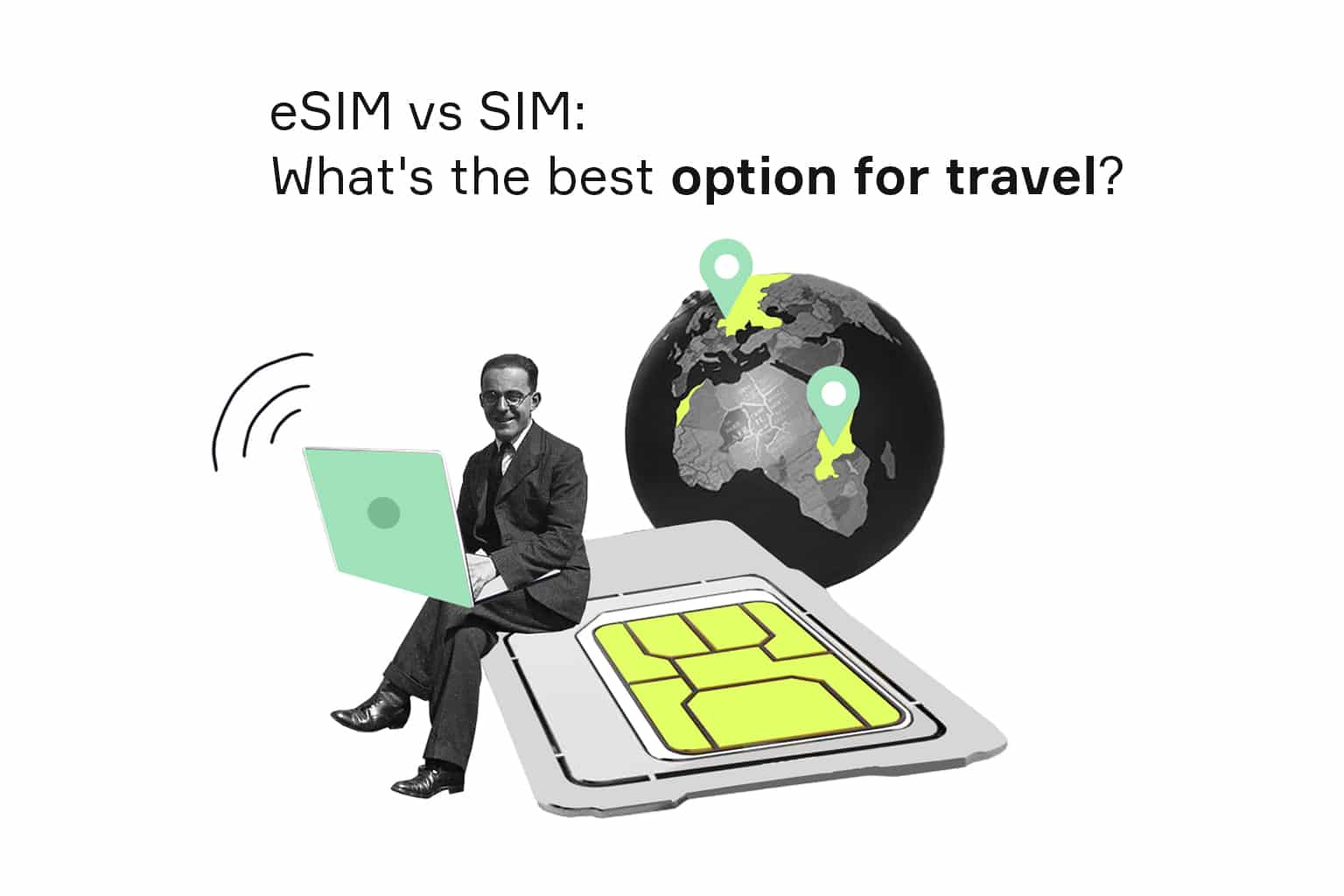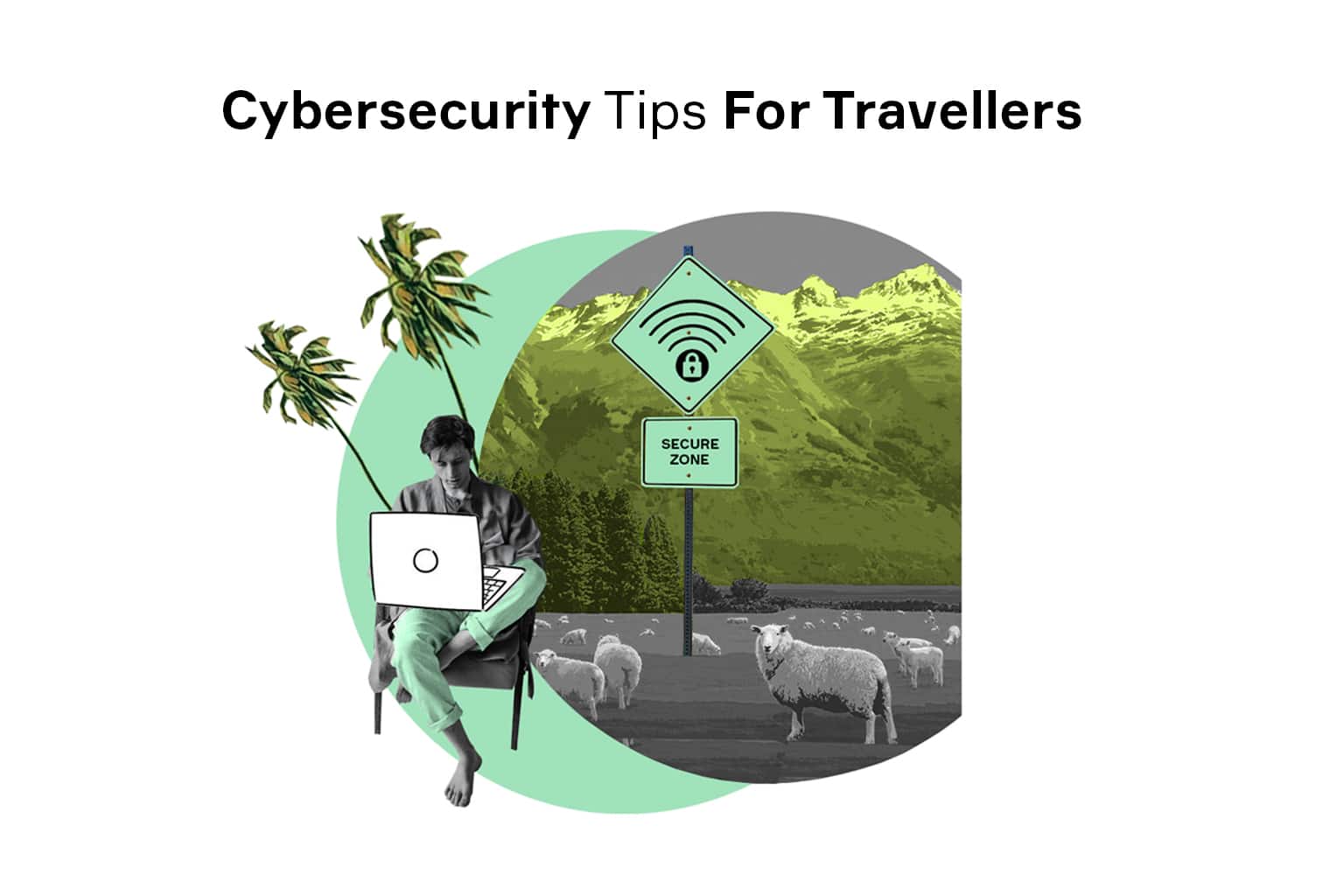
For the last decade, SIM cards have been our trusted way to access the Internet. Now, the new king is in town – the eSIM. However, while some say this is the new era of mobile connectivity for travelers, others warn about it being too early to switch.
Let’s delve into the eSIM vs SIM debate and figure out which is the true winner in this contest for the ultimate solution for travelers.
eSIM Explained
If you have any experience with mobile technology, you are likely familiar with SIM cards. These small plastic rectangles were essentially keys for cellular networks – or, if you want to get technical, a way for the carrier to identify who is using the device. Actually, this is what SIM stands for – subscriber identity module.
Over the years, as devices got smaller, SIM cards also scaled down quite a bit. The latest iteration, known as the nanoSIM, is about four times smaller than the traditional SIM. Still, the SIM module itself takes only a fraction of space on the card, and the rest is needed so it could stay removable. By now, you can already see where this is going: if the phone is expected to be always connected anyway, why not have it built-in?
Insert embedded SIM, or eSIM for short. The idea is to fix the chip directly to the motherboard of the device, which saves much space and offers several other advantages. The trade-off here is that you can no longer swap the modules – yet it doesn’t mean you can’t switch profiles.
Those interested in technical details can check our What is eSIM Card article, but the short version is that instead, you select the identity via the device’s settings.
Differences Between eSIM and SIM
On the technical level, eSIM and a physical SIM card are nearly identical. The main difference is that a chip in eSIM is programmable – meaning it can store several profiles. So, for instance, instead of carrying a travel sim with you when going on a business trip, you can save it to the eSIM and activate when necessary.
However, for the end-user, this little tweak actually makes quite a bit of difference. Instead of examining the technical specifications, let’s see what benefits eSIM can offer and whether they come with any drawbacks.
eSIM vs SIM: Pros and Cons
Whether you have it on a phone, tablet, or another connected device, eSIM offers a range of advantages.
- Smaller size: Both the SIM card and the connector occupy a lot of space in a device, so switching to eSIM broadens the range of devices it can be used with.
- Reliability: A chip soldered onto the motherboard is far less prone to malfunction and will prolong the life of the device.
- Robustness: No removable parts means no holes in the device’s casing. This not only makes it visually appealing but also helps to protect it from dust and moisture.
- Convenience: With an eSIM, you no longer need to carry around a collection of plastic rectangles or mess with taking them out with a paperclip.
- Security: A standard SIM can be stolen, which will essentially hand out your accounts to the perpetrators. An eSIM identity swap is only possible with a password, so all your data is safe.
To be fair, some of these advantages can become drawbacks in certain situations. For instance, when you transfer data to another phone, swapping a SIM card is certainly faster and simpler than uploading the profiles to the cloud and restoring it on a new device.
Next, as the technology is still quite new, you won’t find it on the older hardware, so the compatibility is limited. And, of course, if you damage your phone – the module is gone for good, unlike a physical SIM that could survive and be taken out.
Simply put, the situation is similar to the wired internet connection vs wireless – while some of the benefits may be missing, there are enough improvements to make it a worthwhile trade-off.
Where Can eSIM Be Used?

When you hear about SIM cards, the first thing that probably comes to mind is a cell phone. After all, using cellular networks and mobile data is what it is intended for. However, its range of applications doesn’t end there, and eSIM technology broadens the horizons even more.
The most obvious candidates aside from phones are laptops and tablets. These devices rely heavily on web connectivity and, along with phones, serve as a source of Internet on the road. In this light, eSIM data plans are a welcome addition to their WiFi capabilities, especially for those traveling abroad.
However, the potential of eSIM doesn’t end there. As the number of connecting devices continues to grow, it becomes a technology of choice in many consumer gadgets. In fact, its small size makes it suitable for designs in which traditional SIM would be either impractical or impossible:
- Smart watches
- Fitness trackers
- Portable modems
- IoT gadgets
- Home security devices
In the future, as the adoption of this technology grows, we can expect even more innovative applications, from item tracking and transportation to smart agriculture and the like. Still, nowadays, most adopters use eSIM for international travel.
eSIM for Travel
Whether you are on a business trip or a leisurely journey, staying connected is probably on your list of priorities. And, to be fair, this is not too much of a challenge – after all, we live in the information age, so there’s WiFi everywhere you go. Of course, while ubiquitous and (mostly) free public hotspots are not the safest way to go online, a secure LTE connection will probably be a better option.
The main issue with this method is the cost. Travel internet is quite expensive due to data roaming charges. This is where eSIM really shines. Instead of swapping your SIM cards every time you need to use the web, you can just save it to the international eSIM and switch with a couple of taps. This is especially convenient if you plan on visiting multiple locations and don’t want to hunt down a local SIM in each of them.
This option will also come in handy in locations where network coverage is uneven. Whenever you experience poor connection, just open the settings and go through the list of eSIM carriers until you find the one that works.
Read also: How to Avoid Roaming Charges and Still Get a Great Connection Abroad?
eSIM FAQ
Is eSIM Faster than Physical SIM?
Yes and no. In terms of Internet speeds, it boils down to the underlying technology, so a 4G eSIM will not be faster than a 4G SIM card. eSIM is still faster to swap, although it won’t save you a lot of time.
Does eSIM Have Stronger Signal than Standard SIM?
Again, there is no difference as long as both SIMs are on the same network. However, the signal can be interrupted with a faulty connector, so you can expect a more reliable signal from eSIM.
Which One is More Secure?
It depends. Generally speaking, eSIM is the best travel SIM card option in terms of safety. A physical card can be extracted from a lost or stolen phone. An account saved on the chip, on the other hand, is only available to those who know your password. In other words, your eSIM is only as secure as your device. Still, it does have an advantage in the eSIM vs SIM security contest.
Can I Use eSIM and Physical SIM at the Same Time?
You can – as long as your device supports it. Remember, eSIM is just like a regular SIM card, so having them activated at the same time will be no different from any other dual SIM setup. You might need to configure them the first time you activate your digital SIM, though, so check the manufacturer’s instructions.
How to Switch Between eSIM and SIM?
Again, this depends on your device. In some cases, all it takes is scanning a QR code. Other times, you may need to input the data manually and receive a confirmation from your carrier. For a device like a portable LTE modem, the procedure will probably look like this:
- Download an app and log in
- Enter the settings
- Choose between a physical SIM and eSIM account
Keep in mind that the technology is still in active development, so new eSIM-capable devices are released as you read this. Some may even switch between the two automatically, so be sure to check the manual.
Taking the Best from Both Worlds

Speaking of this new and exciting technology, there are some things you should keep in mind before settling on the best travel SIM card option. The support of eSIM is still far from widespread, and several years may be needed before it becomes commonplace. Even now, it is not yet used to its full potential.
So, for instance, while it supports adding new identities in theory, you might end up buying a device locked into several eSIM data plans offered by the carrier. In fact, carriers are probably not too thrilled with the prospect of customers hopping from one plan to another to find a better deal. So, right now, the chances of taking advantage of eSIM benefits are still slim.
With that said, the best option right now is a device that supports both eSIM and a physical SIM card. This way, you get the best from both worlds – enjoy extra convenience and security whenever it is available and have a backup plan where it’s not. In other words, if you like to be prepared for anything, the answer to “Which is better for travel – SIM card or eSIM?” is “Both.”
Wrapping Up
eSIM is a technology with tremendous potential. Without a doubt, we will see some innovative examples of its use in the near future. However, if you are a seasoned traveler, it is still too early to discard the trusted SIM card. This is why we have made our nect MODEM compatible with both. Now, you can finally make the most out of your journeys while enjoying the latest technology.
All illustrations are created by Olga Zherebetska.



